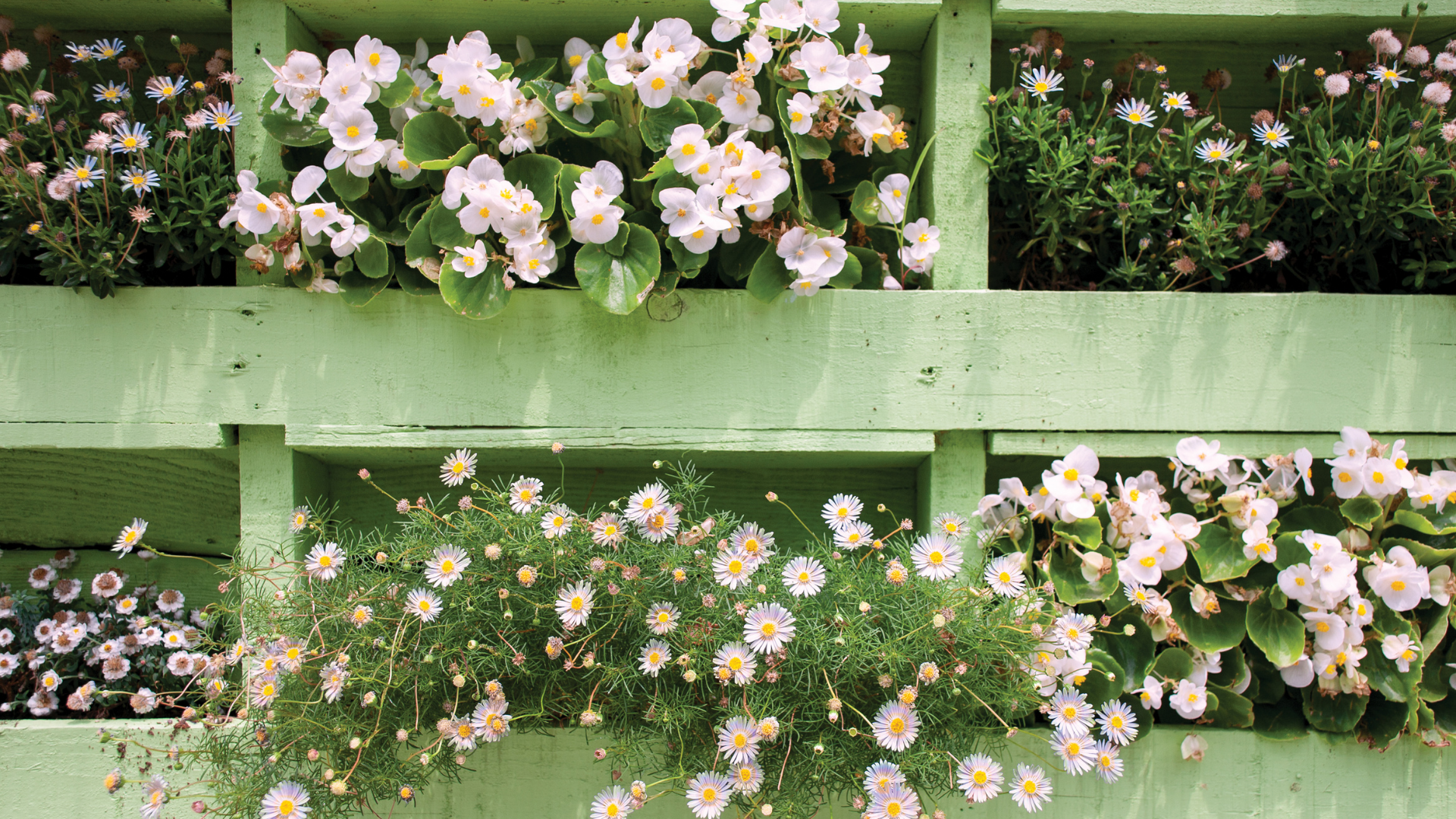How to Create a Living Pallet Wall in Your Community
With limited or often unloved space, doubts naturally arise about the possibilities of creating luscious, green environments to live in. Though we all know the benefits. Living walls for example can increase our memory by up to 12-15%, with large scale versions reducing noise pollution by 50%.
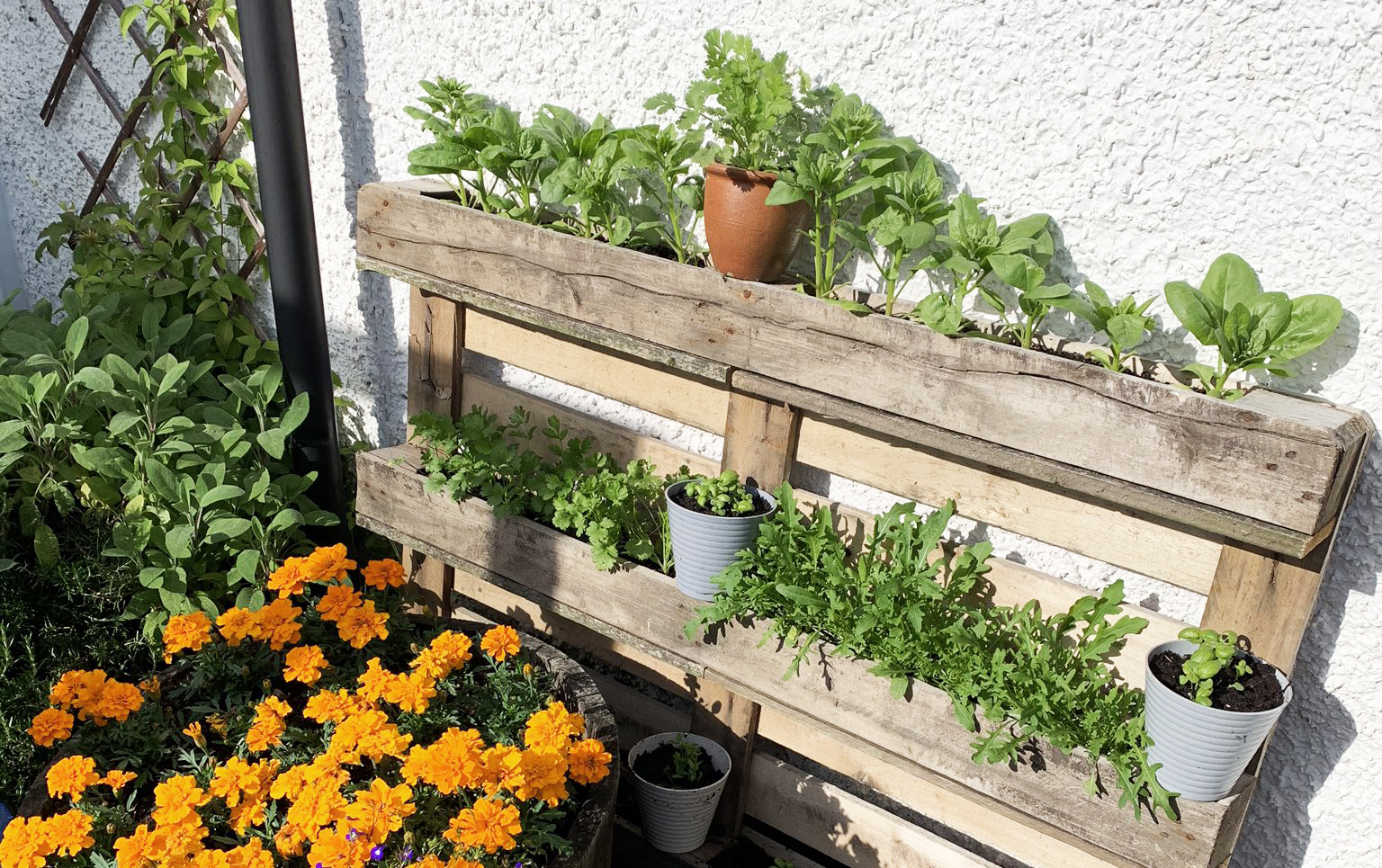
Lindsay Rao‘s Living Wall includes rocket, coriander, spinach, basil and parsley.
Also known as ‘vertical gardens’ – living walls are a creative method of using limited space in built environments, often found on the side of buildings or bus shelters. When scaled down, they offer an ingenious way to brighten our communities, grow food and attract wildlife to areas previously neglected by nature.
To create your very own Living Pallet Wall, you’re going to need the following:
- Small to medium sized Pallet
- Claw Hammer
- Sandpaper
- Nails
- Tape Measure
- Landscaping Paper / Weed Mat
- Scissors
- Staple Gun
- Potting Mix
Smoothing
Once you have found a pallet you’re happy with, it’s worth thoroughly checking for any lose or hazardous nails – remember, this is meant to be fun! Once it’s clear, sandpaper down any ragged edges or rough spots. This will help when it comes to laying your mat, as the last thing you want is for it to rip.
Hammer time
As we’re working with small to medium pallets, you will need to remove every second board, giving your plants more room to grow and a much better chance of success if you’re growing food! Using the crow hammer, prize them away from the pallet at each corner and sand down the area if needed.
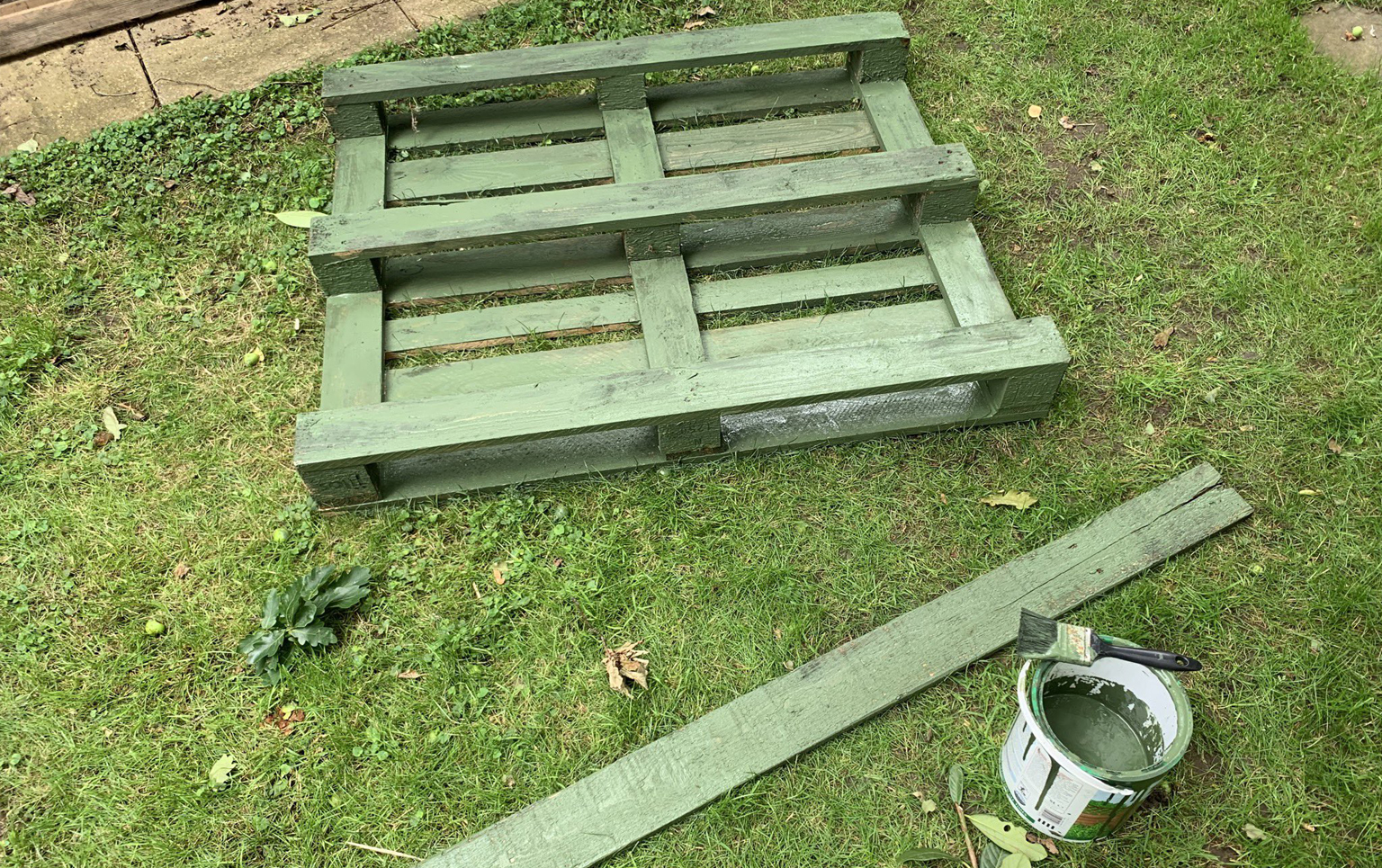
Retep Retals decided to paint their pallet, part of a summer project
Measure Up
Using your tape measure, work out the dimensions for the length, width and density of your pallet and then mark this onto your weed mat so you know how much to use. It’s always handy to add a few extra centimetres onto either side when wrapping, though remember to save a healthy amount of fabric for your pockets which will hold the plants.
Stapling
Lay your pallet down on its front and begin wrapping your mat across the back and around your pallet. Once it’s in place, you can turn it over and start to staple your material along the edges, back and bottom, ensuring the corners are nicely tucked in to avoid any soil from spilling out.
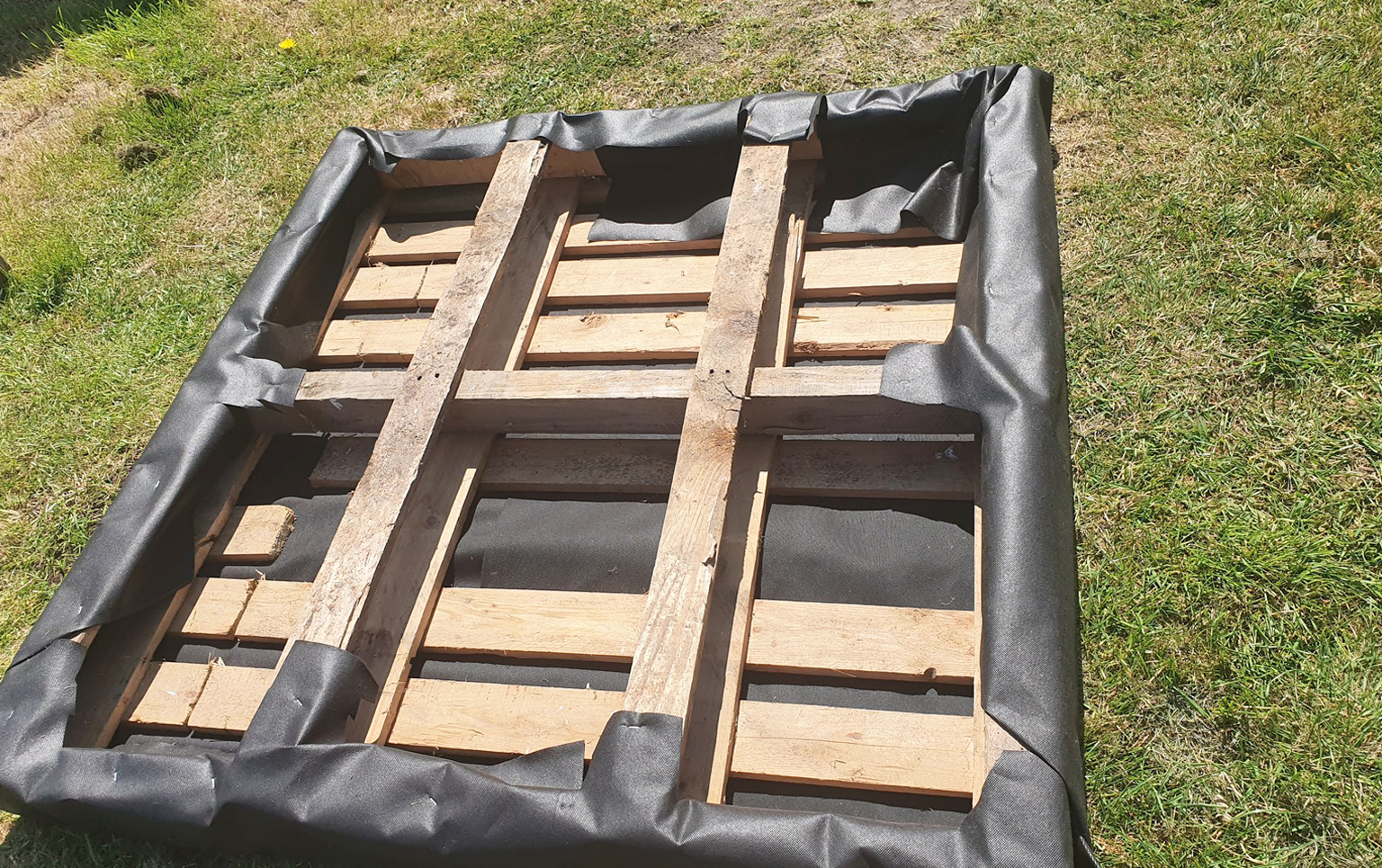
Emma had a go at making her very first vegetable bed using a pallet!
Pocketing
Using the fabric you have put to one side, measure and cut your pockets to fit inside the planter horizontally at each wooden board support section, stapling each pocket securely as you go! Once complete, cut back any lose ends with scissors to tidy up the finish.
Soil Up
Wait! Keep the scissors in your hand! Before adding the soil, poke through a few holes in each pocket to allow for drainage, this will keep your plants healthy. Now you can start filling with soil (we recommend just below the wooden line!) before pressing down firmly onto it so it’s truly at home and no soil is lost.
Planting
Depending on the location of your finished pallet and how much sunlight it receives, you’ll need to plant varieties that have a chance of prosperity. Succulent plants are very popular due to their diversity, from tropical to cold hardy, these beauties can store water for weeks and even months. If you’ve opted for a pallet garden, vegetables and herbs like parsley, thyme and salad greens work really well in tighter spaces.
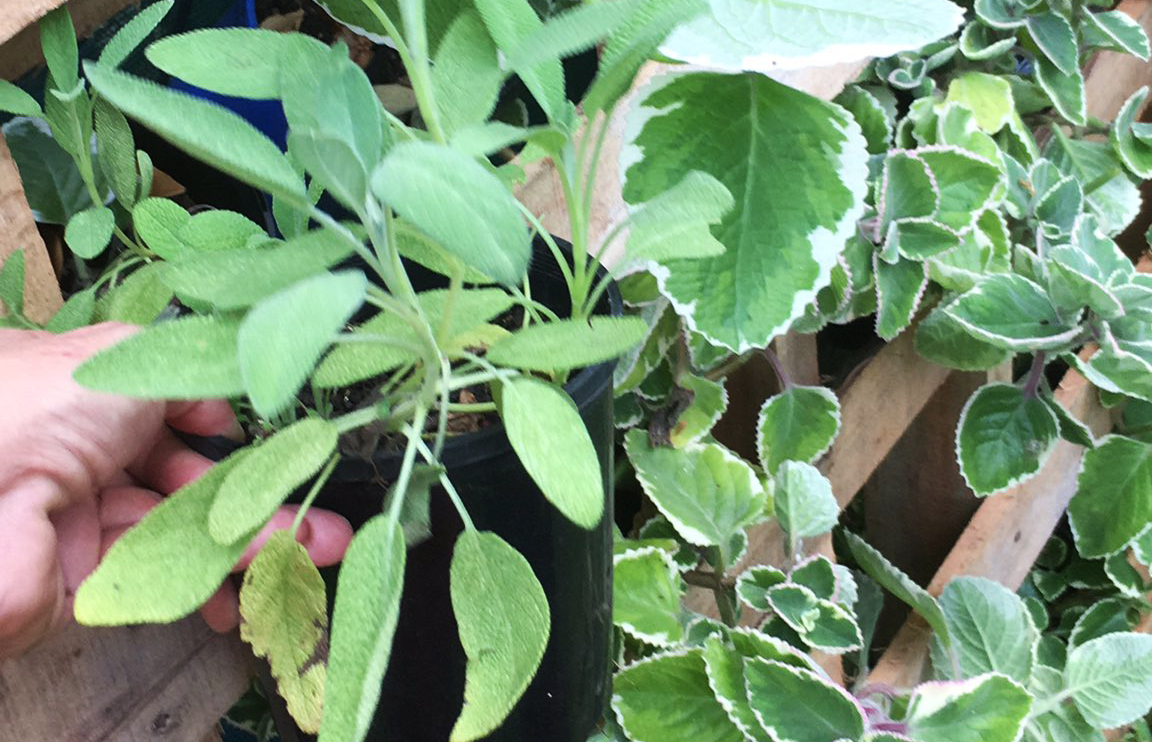
Amy made her son a surprise garden planter for his courtyard!
Placing
We recommend that once your plants are in, you keep your new living wall flat for a short while to allow them to take root and hold their place. After about a week, you can hang your vertical garden on the wall using screws and brackets that support the weight, then power drilled into place once properly marked out.

Marie Remy says her lockdown achievement was ‘starting a small salad garden!’
Other things you maybe interested in
Mini Forest Green Roof Rain Garden Planter
Stay connected
If you’re feeling inspired to now create your very own Living Pallet Wall, make sure you let us know on social media! Stay tuned for exciting projects on the horizon.
Facebook Twitter LinkedIn Instagram
If you’d like to speak to a member of our landscape or communities team about implementing something similar in your community, don’t hesitate to get in touch:


